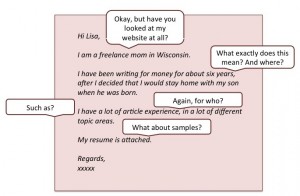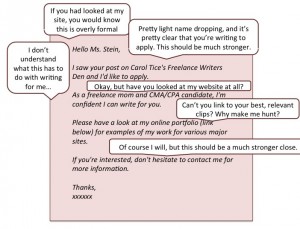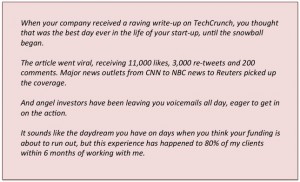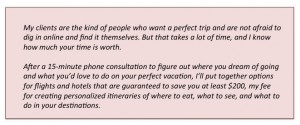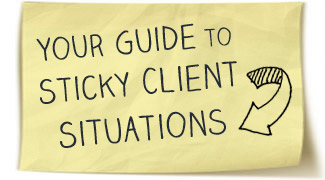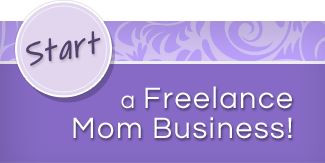
When I was looking for a writer to help me with my business, I was really surprised at the responses that came in. Often, there wasn’t necessarily anything blatantly wrong with them, but they just didn’t pop or sell or particularly grab my attention:
Since I was looking for a writer, I was expecting the sales pitch letter itself to be something of a mini-masterpiece, since it was essentially the audition. If you can’t grab my attention in an email that I’m expecting, how can you promote my business to new markets?
There are 5 key aspects to writing a successful pitch:
- attention-grabbing intro
- a clear understanding of the prospect’s needs
- a proposition they can’t say no to
- experience that matches the prospect’s needs
- asking for a sale (or something else)
Let’s look at why each section is necessary and how these examples missed the mark.
The Attention-Grabbing Intro
Without this, no one will read your emails or letters. Really.
Imagine yourself receiving an unsolicited letter in the mail asking for a donation to a non-profit or trying to get you to apply for a new credit card. You probably already have your mind made up that it’s spam before you open it, right?
There are 4 classic ways to create an intro that lures your reader in:
- painting a picture
- a surprising statistic
- opening mid-action
- using an anecdote
You can often combine these for extra impact. Say you are a PR specialist for technology companies. Perhaps your sale pitch begins like this:
In this example, you’ve painted a picture (the success clients have when working with you), introduced a surprising statistic (your incredible success rate with clients), started mid-scene (the company has already gotten the TechCrunch write-up, but you don’t know how), and told an anecdote (since it turns out this has happened to clients of yours).
It incorporates all the ways to create an attention-grabbing intro, and, I don’t know about you, but I would have to keep reading to find out how you do it if I was a tech company looking to break into the big leagues.
Clear Understanding of the Prospect’s Needs
In the hypothetical example above, we’ve shown that we understand the prospect’s needs through our intro:
- the new company needs exposure in high-profile outlets
- high profile exposure can breed massive interest in the product if, as the company believes, it is a powerfully disruptive technology the market needs
- high profile exposure will bring in investor interest, which is also crucial to the company’s success
You can also show that you understand your prospect’s needs in a simple empathizing paragraph in the introduction, or after, but it works best if that understanding is infused throughout your sales pitch.
Particularly in your . . .
Proposition They Can’t Say No To
This is where you outline what you are proposing to do for the client. What makes it an offer they can’t refuse is the previous point, your understanding of the client.
One of the best tactics you can use in your proposition is a guarantee.
Let’s say you are an independent travel planner. You make basic itineraries and travel bookings for your clients, essentially helping them find better destinations for their interests, and rates on flights and accommodations than they would find themselves.
You know that your prospects are not people who usually work with a “travel agent.” They find things online themselves, but they are busy professionals who don’t always have the time to do enough research to find the perfect trip. Since they are spending several thousand dollars on a week-long trip, if you can show that you are saving them enough money to justify your fee, taking advantage of your expertise essentially for free is a no brainer. So you outline your proposition like this:
But if you’re not comfortable making a guarantee, offer the prospect something free (a consultation phone call, for instance) with no strings attached that will help them in their business.
How can they say no to free help?
Experience that Matches the Prospect’s Needs
There is one way they will turn down free help. If the prospect doesn’t think you can really help them, even your too-good-to-be-true offer will fail.
For them to take you up on your proposition, you have to show that you can deliver the goods. And there are a variety of easy ways to do this:
- another statistic
- testimonials from past clients
- well-known individuals or companies you’ve worked with (i.e. hair stylists who quote celebrities as their clients, writers who’ve written for the New York Times, coaches to Fortune 500 CEOs)
In the case of the travel consultant above, you might combine a statistic (I specialize in Chinese travel, having lived in China for 10 years.), a testimonial (Past clients have told me they never would have had so much fun navigating Chinese culture, food, and traditions without my insights.), and name dropping (Fodor’s recently recruited me to update their guidebook on China because of my country-wide expertise.)
Ask for the Sale (or Meeting)
No matter how many other parts of the perfect pitch you hit on, you’re dead in the water if you don’t close.
You have to end your sales pitch with a simply phrased question. Preferably one the prospect cannot say no to.
Since a first sales pitch, especially a cold one, is often not the place where you’re going to close a sale, it’s fine to end with something soft:
- Can we set a time for a free coaching session?
- Would you like to receive a free copy of my white paper on 10 ways to amp up your social media in 5 minutes a day?
- May I call you for a few minutes next week to talk about where you are right now in your public relations?
Combine the five essential qualities of the perfect pitch with brief, clear sentences—even short, even one-word, paragraphs for emphasis—and you’re sitting on a goldmine.
Photo courtesy of freedigitalphotos.net
